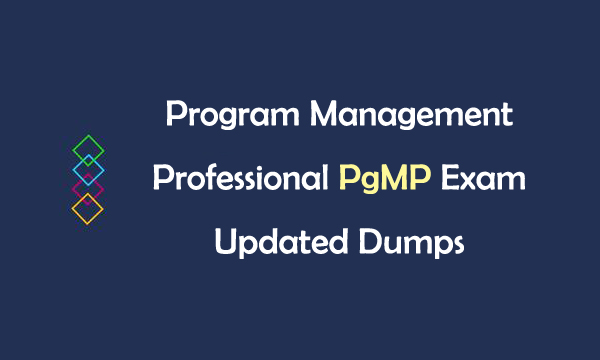Program Management Professional PgMP Exam Updated Dumps
June 08,2021 02:55 AM
Program Management Professional PgMP exam dumps have been updated, which contain 452 Q&As. To earn your Program Management Professional PgMP credential, you need to meet the experience and education requirements, and pass the panel review and the multiple-choice examination. The PgMP examination is a vital part of the activities leading to earning a professional credential, thus it is imperative that the PgMP examination reflect accurately the practices of the program management professional.

PMI PgMP Exam
The Program Management Professional PgMP is a visible sign of your advanced experience and skill and gives you a distinct advantage in employment and promotion.
Number of questions: 170 multiple choice questions
Duration: 4 hours
Exam Fee: member: $800, non-member: $1000
Program Management Professional PgMP Exam Outline
PgMP program Management Professional exam outline contains the following details.
Domain 1: Strategic Program Management
Identifying opportunities and benefits that achieve the organization’s
strategic objectives through program implementation
Domain 2: Program Life Cycle
Activities related to:
Initiating. Defining the program and constituent projects, and obtaining agreement from stakeholders
Planning. Defining program scope and developing the program, including all constituent projects, and all activities that occur within the program
Executing. Performing work necessary to achieve the program’s objectives and deliver the program’s benefits
Controlling. Monitoring progress, updating program plans as required, managing change and risk
Closing. Finalizing all program activities, including all constituent projects, executing transition plan, archiving, obtaining approvals, and reporting
Domain 3: Benefits Management
Defining, creating, maximizing, and sustaining the benefits provided by programs
Domain 4: Stakeholder Management
Capturing stakeholder needs and expectations, gaining and maintaining stakeholder support, and mitigating/channeling opposition
Practice Updated PgMP Exam Dumps Questions
The updated PgMP exam dumps questions can help you study for the above Program Management Professional PgMP exam outline. Share some PMI PgMP exam updated dumps questions and answers below.
1.The number of emerging risks increases in a component project and the program manager falls behind in reviewing and approving the plans. This impacts the component project manager's ability to effectively address the risks. In this situation, what should the program manager change about the risk management plan?
A. Allow the component project manager to delegate risk management responsibilities.
B. Assign the resolution of project-level risks to the component project manager.
C. Include risk escalation policies and procedures in the risk response plan.
D. Increase flexibility with risks that require a risk response.
Answer: A
2.Which of the following documents describes the details for each component in the WBS?
A. WBS detail
B. Risk register
C. WBS dictionary
D. Project charter
Answer: C
3.Don is the project manager of the NQP Project for his organization. This project is scheduled to last for 18 months and will have several elements of the project that have government regulations. Management is concerned with the regulations and would like Don to report on the activities that will be affected by the regulations. What document should Don reference for information on the activities and the regulations?
A. Risk management plan
B. Risk register
C. Activity list
D. Activity list and attributes
Answer: D
4.Which of the following statements is most accurate about the critical path?
A. The critical path is always one path that shows the project duration.
B. The critical path has no float.
C. The critical path is the longest path because it has the most activities.
D. The critical path reveals which path has the most risk of failure.
Answer: B
5.You are the program manager for your organization. Your program team has 43 people that all need to be monitored and controlled. You would like to create a standardized report that you can use to monitor, control, and record the performance of each staff member in your program. What type of report can you create that will help you track your staff and their performance?
A. Performance reports
B. Staff variance reports
C. Exceptions report
D. Lessons learned
Answer: A
PgMP Exam Dumps PDF & SOFT | 1 Year Free Update | Money Back Guarantee
- Related Suggestion
- PMI-RMP PMI Risk Management Professional Exam Preparation May 22,2023
- PMI-PBA PMI Professional in Business Analysis Dumps December 22,2020
- Significance of the PfMP Portfolio Management Professional Exam January 29,2024
- PMP Project Management Professional Exam Dumps February 22,2020
- Popular Programming Certifications in 2023 June 23,2023

